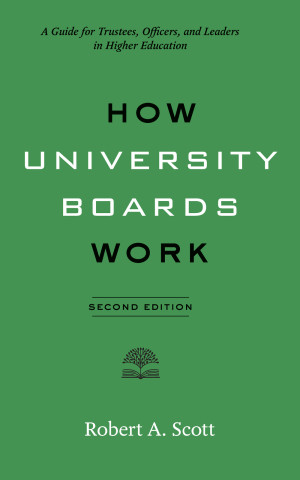
Reviews
In authoring How Universities Work, Lombardi provides his expert, honest, and, at times, cynical treatise on the complexities of university management... The witty yet succinct treatment he uses to convey his message makes the book a quick read... The book will be a welcome addition to any faculty or administrators' library.
Lombardi is a man who has been to the rodeo. He has served as a university president more than once. He has clearly learned every step of the way, has thought about the university, and produced a well-crafted, well-articulated text that will help to inform the uninitiated and add insight even to those with extensive experience on campus. This is the book that all university presidents wish our trustees, donors, provosts, vice presidents, deans, and faculty had read during their first week on the job. This is not a good book; this is a very good book.
John Lombardi has always looked at higher education through the opposite end of the telescope. In so doing, he challenges the status quo. In How Universities Work he urges us to think differently and to engage disruptive ideas. This is a must-read for those who wish to see the American university regain its leadership role in this century.
John Lombardi has outlined for us all what is involved in making these complex knowledge enterprises work and how we might manage their evolution. As an on-the-ground leader in a wide range of sociopolitical settings, Lombardi provides the kind of managerial insight that can be derived only from a person who has led from the front and made a difference. This is an important book for people interested in how one of America's most successful organizational designs can continue to be a key contributor to national success in the decades ahead.
How Universities Work should be required reading for all governing boards, trustees, and donors. It provides a perspective of university operations and tells us how and why these wonderful places succeed. This information is essential for us to support and encourage these institutions to thrive.
Book Details
Preface
Acknowledgments
1. Quality Engines
2. Management
3. Critics
4. Characteristics
5. Teaching
6. Research
7. Faculty
8. Finance
9. Budgetts
10. Measurements
11. Quality
12. Managing Improvement
13. Support
Preface
Acknowledgments
1. Quality Engines
2. Management
3. Critics
4. Characteristics
5. Teaching
6. Research
7. Faculty
8. Finance
9. Budgetts
10. Measurements
11. Quality
12. Managing Improvement
13. Support Services and Special Units
14. Regulation and Governance
15. Disruptive Change
16. People
Additional Reading: A Sampler
Index






